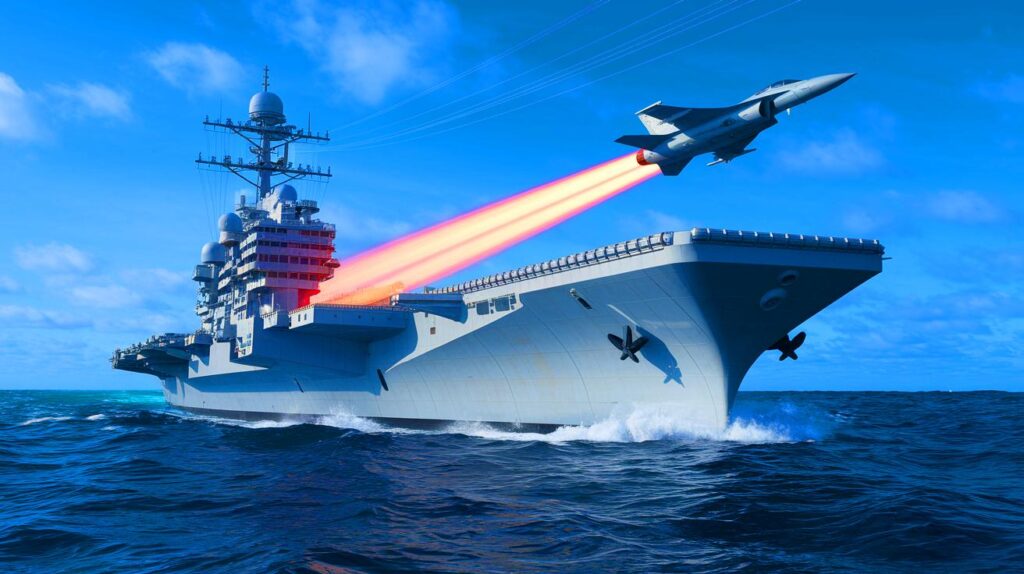| In Brief |
|
China’s military advancements attract global attention, particularly with recent developments in its naval capabilities. The Fujian aircraft carrier, being the first Chinese carrier to use catapults, marks an important milestone in the nation’s defense technology. As the largest conventional warship in the world, the Fujian has undertaken a new trial, testing its sophisticated systems and demonstrating China’s growing maritime power.
Advanced Sea Trials of the Fujian and Its Capabilities
Launched on June 17, 2022, the Fujian represents a new era in Chinese naval engineering. After its initial trial in May, which tested its propulsion, electrical systems and other equipment, it set sail for another trial from the Jiangnan shipyard in Shanghai. The Shanghai Maritime Safety Administration issued a warning to control traffic near the Yangtze River, emphasizing the significance of these trials.
Reports indicate that during this phase, the carrier’s advanced electromagnetic catapults and arrestor wires could be tested with fixed-wing jets. This phase is crucial as it marks the first known complete operational test of the Fujian’s embarked fighters, particularly the J-15T or J-35. These tests are essential as they bring the carrier closer to delivery to the People’s Liberation Army Navy (PLA Navy). With the Fujian entering active service, China will boast three active aircraft carriers, a fleet surpassed only by the eleven carriers of the U.S. Navy.
Revolutionary Catapult Launch System
The Fujian stands out as the first domestically produced Chinese aircraft carrier to incorporate a catapult launch system. This system enables the carrier to launch aircraft with increased efficiency and speed. Unlike its predecessors, Liaoning and Shandong, the Fujian is equipped with three electromagnetic catapults, allowing the launch of heavier aircraft and fully loaded jets. This technological leap enhances the carrier’s combat capabilities, making it a formidable force in naval warfare.
China’s J-15T, also known as the Flying Shark, has shown readiness for launch and landing operations on the Fujian, capable of catapult launches and reverse command. The carrier’s larger displacement enables it to transport more aircraft, thereby extending its operational range. The Fujian’s ability to launch jets quickly is a crucial advantage, especially during high-stakes military operations.
Integration of Next-Generation Aircraft
One of the most exciting aspects of the Fujian is its potential to accommodate advanced aircraft. The electromagnetic catapults are expected to support enhanced versions of the J-15 fighter, as well as newcomers such as the next-generation stealth fighter, the J-35. Additionally, the KJ-600, an early warning aircraft, and the JL-10, an advanced training aircraft, are set to be part of the Fujian’s arsenal.
The integration of these aircraft not only enhances the carrier’s versatility but also signifies a shift toward more advanced naval aviation capabilities. The Fujian began training with the catapults in November 2023, launching test vehicles at sea. The embarked fighters J-15T and J-35B, variants developed specifically for catapults, further demonstrate China’s commitment to advancing its naval technology.
Strategic Implications of the Fujian’s Deployment
The deployment of the Fujian holds significant strategic implications for China and the region at large. As China’s naval capabilities expand, its influence in the already tense Asia-Pacific region grows. The presence of a more advanced aircraft carrier bolsters China’s ability to project power and secure its maritime interests.
Moreover, the technological advancements represented by the Fujian enhance China’s military deterrence. Experts suggest that once the aircraft carrier enters active service, it will not only complement China’s existing naval assets but also challenge other naval powers. The frequency and intensity of the Fujian’s sea trials reflect China’s determination to ensure its combat readiness, signaling a shift in the naval power balance in the region.
As the Fujian continues its trials and approaches operational status, the world watches with keen interest. This development raises questions about the future of naval warfare and the role of aircraft carriers in power projection. How will other nations respond to China’s growing naval capabilities, and what does this mean for the geopolitical landscape of the future?








